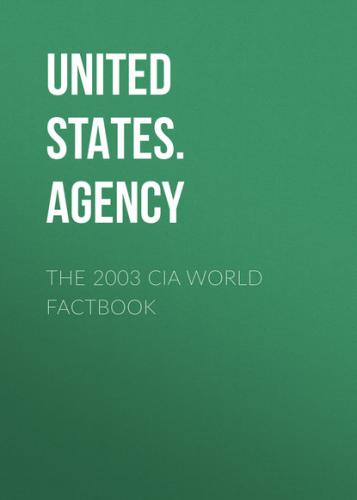4.03 deaths/1,000 population (2003 est.)
Net migration rate:
1.66 migrant(s)/1,000 population (2003 est.)
Sex ratio:
at birth: 1.05 male(s)/female
under 15 years: 1.05 male(s)/female
15–64 years: 1.04 male(s)/female
65 years and over: 0.74 male(s)/female
total population: 1.03 male(s)/female (2003 est.)
Infant mortality rate:
total: 24.15 deaths/1,000 live births
female: 22.87 deaths/1,000 live births (2003 est.)
male: 25.37 deaths/1,000 live births
Life expectancy at birth:
total population: 71.4 years
male: 70.13 years
female: 72.73 years (2003 est.)
Total fertility rate:
6.17 children born/woman (2003 est.)
HIV/AIDS - adult prevalence rate:
NA%
HIV/AIDS - people living with HIV/AIDS:
NA
HIV/AIDS - deaths:
NA
Nationality:
noun: NA
adjective: NA
Ethnic groups:
Palestinian Arab and other 99.4%, Jewish 0.6%
Religions:
Muslim (predominantly Sunni) 98.7%, Christian 0.7%, Jewish 0.6%
Languages:
Arabic, Hebrew (spoken by Israeli settlers and many Palestinians),
English (widely understood)
Literacy:
definition: NA
total population: NA%
male: NA%
female: NA%
Government Gaza Strip
Country name: conventional long form: none conventional short form: Gaza Strip local long form: none local short form: Qita Ghazzah
Economy Gaza Strip
Economy - overview:
Economic output in the Gaza Strip - under the responsibility of the
Palestinian Authority since the Cairo Agreement of May 1994 -
declined by about one-third between 1992 and 1996. The downturn was
largely the result of Israeli closure policies - the imposition of
generalized border closures in response to security incidents in
Israel - which disrupted previously established labor and commodity
market relationships between Israel and the WBGS (West Bank and Gaza
Strip). The most serious negative social effect of this downturn was
the emergence of high unemployment; unemployment in the WBGS during
the 1980s was generally under 5%; by 1995 it had risen to over 20%.
Israel's use of comprehensive closures decreased during the next few
years and, in 1998, Israel implemented new policies to reduce the
impact of closures and other security procedures on the movement of
Palestinian goods and labor. These changes fueled an almost
three-year-long economic recovery in the West Bank and Gaza Strip;
real GDP grew by 5% in 1998 and 6% in 1999. Recovery was upended in
the last quarter of 2000 with the outbreak of violence, triggering
tight Israeli closures of Palestinian self-rule areas and a severe
disruption of trade and labor movements. In 2001, and even more
severely in 2002, Israeli military measures in Palestinian Authority
areas resulted in the destruction of capital plant and
administrative structure, widespread business closures, and a sharp
drop in GDP. Another major loss has been the decline in income
earned by Palestinian workers in Israel. International aid of $2
billion in 2001–02 to the Gaza Strip and West Bank have prevented
the complete collapse of the economy.
GDP:
purchasing power parity - $735 million (2002 est.)
GDP - real growth rate:
−15% (2002 est.)
GDP - per capita:
purchasing power parity - $600 (2002 est.)
GDP - composition by sector: agriculture: 9% industry: 28% services: 63% (includes West Bank)
Population below poverty line:
60% (2002 est.)
Household income or consumption by percentage share:
lowest 10%: NA%
highest 10%: NA%
Inflation rate (consumer prices):
2.2% (includes West Bank) (2001 est.)
Labor force:
NA
Labor force - by occupation:
services 66%, industry 21%, agriculture 13% (1996)
Unemployment rate:
50% (includes West Bank) (2002 est.)
Budget:
revenues: $930 million
expenditures: $1.2 billion, including capital expenditures of $15
million (includes West Bank) (2000 est.)
Industries:
generally small family businesses that produce textiles, soap,
olive-wood carvings, and mother-of-pearl souvenirs; the Israelis
have established some small-scale modern industries in an industrial
center
Industrial production growth rate:
NA%
Electricity - production:
NA kWh; note - electricity supplied by Israel
Electricity - consumption:
NA kWh
Electricity - exports:
0 kWh (2001)
Electricity - imports:
NA kWh; note - electricity supplied by Israel (2001)
Agriculture - products:
olives, citrus, vegetables; beef, dairy products
Exports:
$603 million f.o.b., includes West Bank
Exports - commodities:
citrus, flowers
Exports - partners:
Israel, Egypt, West Bank
Imports:
$1.9 billion c.i.f., includes West Bank
Imports - commodities:
food, consumer goods, construction materials
Imports - partners:
